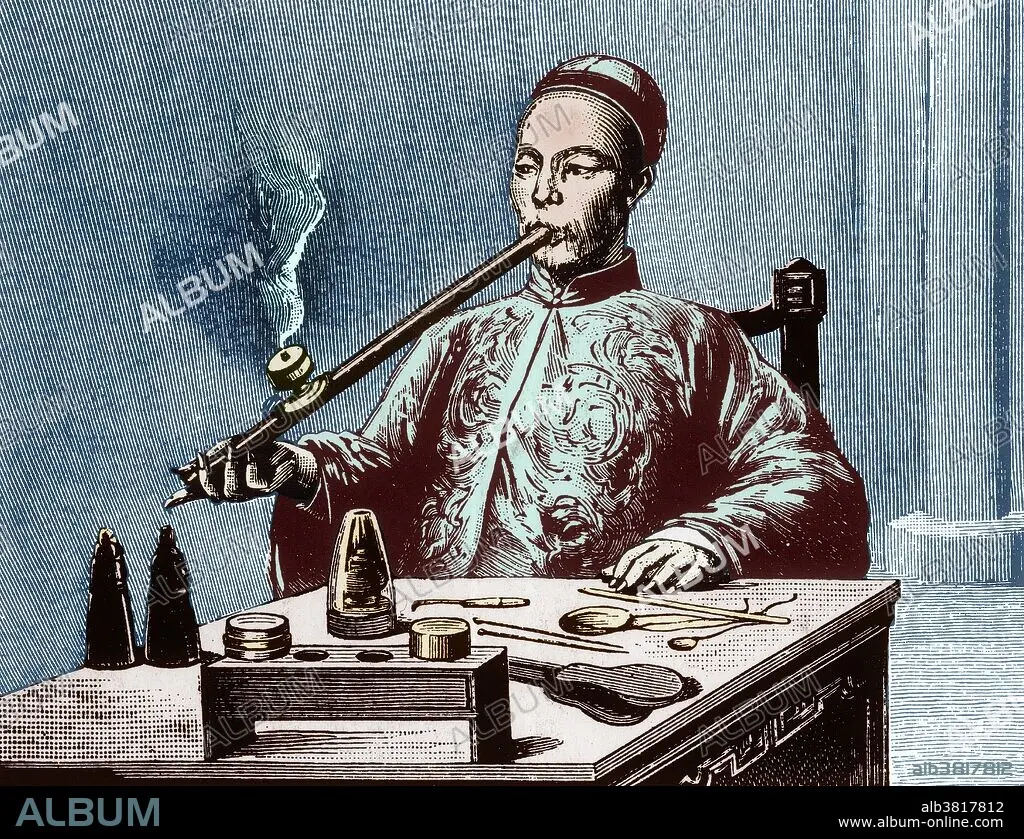Opium smoking has a long history and was particularly prevalent in China during the 19th and early 20th centuries. It was a popular recreational activity and was also used for its medicinal properties. Opium smoking involved the inhalation of the smoke produced by heating opium in a pipe or other devices designed for this purpose.
The Opium Pipe
The opium pipe was the primary tool used for smoking opium. It consisted of several components, including a bowl, stem, and mouthpiece. The bowl was where the opium was placed and heated, and the stem was used to draw the smoke into the mouth. The mouthpiece provided a comfortable grip and prevented direct contact with the heated bowl.
The opium pipe was typically made of materials such as bamboo, bone, or ceramic. It often featured intricate designs and decorations, reflecting the cultural significance and aesthetic appreciation of opium smoking in Chinese society.
The Opium Smoking Process
To smoke opium, a small quantity of the substance, usually in the form of a pellet or paste, was placed on the heated bowl of the pipe. The bowl was heated using a flame, such as from a lamp or candle. As the opium heated, it released vapors that were inhaled through the stem and mouthpiece.
The smoker would hold the pipe close to their mouth and draw the smoke into their lungs. They would then exhale the smoke, often producing a distinct smell and a visible cloud. Opium smoking was often a social activity, with individuals gathering in opium dens to smoke together and engage in conversation.
Opium Smoking in Chinese Culture
Opium smoking became deeply ingrained in Chinese culture during the 19th century. It was initially introduced by European traders and missionaries, but it quickly gained popularity among the Chinese population. Opium dens emerged as social spaces where people from different backgrounds could come together and share their experiences.

However, opium smoking also had detrimental effects on individuals and society as a whole. It led to addiction, health problems, and social issues. The Chinese government eventually took measures to combat the opium trade and regulate its use.
Frequently Asked Questions
Is opium smoking still practiced today?
Opium smoking is now illegal in most countries, including China. Its use has significantly declined over the years due to the recognition of its harmful effects and the implementation of strict drug control policies.
What were the effects of opium smoking?
Opium smoking produced a calming and euphoric effect on the user. It could also alleviate pain and induce sleep. However, prolonged use often resulted in addiction, respiratory problems, and other health issues.
How did opium smoking contribute to the Opium Wars?
The Opium Wars were a series of conflicts between China and Western powers in the 19th century. Opium smoking played a significant role in these wars, as the Chinese government attempted to restrict the opium trade, leading to tensions with foreign traders and ultimately to armed conflicts.
Opium smoking was a popular activity in China during the 19th and early 20th centuries. It involved the inhalation of opium vapors produced by heating the substance in a pipe. Opium smoking had both cultural significance and detrimental effects on individuals and society. Today, opium smoking is illegal in most countries, reflecting the recognition of its harmful nature.
If you want to know other articles similar to Opium smoking: history, process & cultural significance you can visit the Opium smoking category.

